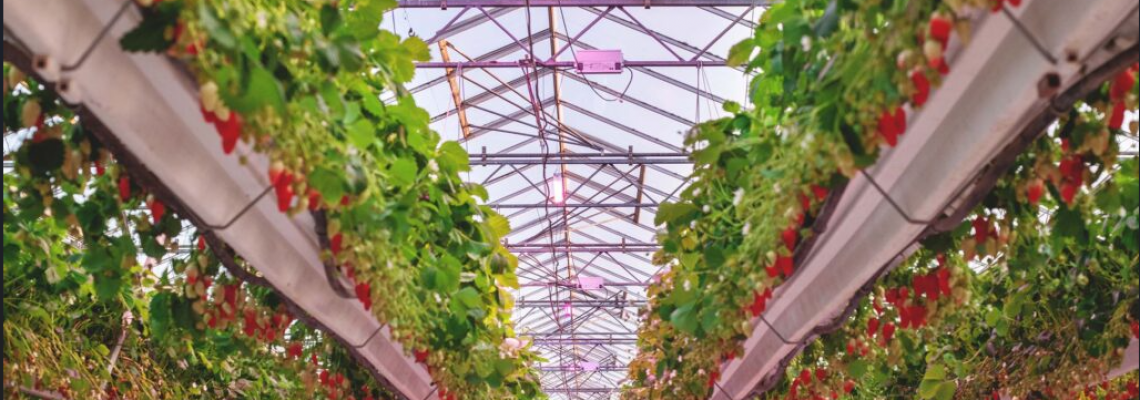
As agriculture grapples with climate change, urbanization, and the rising demand for food, farmers are turning to advanced technologies to meet these growing challenges. One of the most significant innovations transforming modern farming is lighting specifically, the shift from traditional systems to smart LED grow lights.
For decades, lighting systems like high-pressure sodium (HPS), metal halide, and fluorescent lamps were the standard in controlled environment agriculture (CEA). While they provided basic illumination, these older technologies lacked efficiency, precision, and adaptability. Today, however, smart LED lighting is taking center stage, and for good reason.
LEDs offer more than just energy savings. They provide growers with precise control over light intensity and spectrum, allowing for tailored lighting recipes that support each stage of plant growth. From improving crop yield and quality to reducing operational costs and environmental impact, LED systems are setting new standards in agricultural efficiency.
Smart LEDs can also integrate with data-driven farming platforms, enabling automation, real-time adjustments, and remote monitoring. In short, they’re not just lights they’re intelligent tools designed for the future of farming.
In this blog, we explore how smart LED grow lights are redefining the agricultural landscape and why traditional lighting systems are rapidly becoming obsolete.
1. Precision Lighting: Giving Plants Exactly What They Need
Plants need different wavelengths of light at different stages of growth. Traditional lights emit a broad and often inefficient spectrum, forcing growers to compromise. Smart LEDs, however, can be tuned to deliver exact light recipes tailored to each plant type and growth stage.
Blue light promotes vegetative growth
Red light encourages flowering and fruiting
Full-spectrum LEDs mimic sunlight for balanced development
This level of customization is impossible with HPS or fluorescent lamps. Smart LED systems even allow growers to adjust spectrums in real time based on plant feedback or environmental data.
2. Energy Efficiency: More Output with Less Input
Traditional lighting systems are energy hogs. HPS lamps convert a significant portion of energy into heat rather than usable light. In contrast, LED grow lights use up to 70% less energy while providing the same if not better light intensity.
This efficiency doesn’t just reduce electricity bills. It also lowers the overall environmental impact, helping growers reduce their carbon footprint and align with sustainability goals.
3. Heat Management: Reducing Stress and Costs
High heat output from traditional lights requires complex and costly cooling systems to maintain optimal growing temperatures. Too much heat can also lead to plant stress, reducing yields or harming sensitive crops.
LEDs emit very little radiant heat, which means:
Lights can be placed closer to plants (increasing light absorption)
Less need for air conditioning or ventilation
Lower water loss due to evaporation
All of this translates to better resource management and healthier crops.
4. Smart Integration: Automation and Data-Driven Decisions
Modern LED lighting systems are more than just fixtures they’re intelligent tools. Many smart LEDs are integrated with IoT (Internet of Things) and AI platforms that allow for automation, remote control, and real-time monitoring.
Growers can:
Adjust light schedules and spectrums via smartphone apps
Sync lighting with sensors for temperature, humidity, and CO₂
Collect and analyze data to improve crop cycles over time
This kind of data-driven control is paving the way for precision agriculture, where every input is optimized for maximum output.
5. Longevity and Maintenance: LEDs Outlast the Competition
Traditional grow lights have limited lifespans often just a few thousand hours and require frequent replacements. That adds up to labor, cost, and operational downtime.
Quality LED fixtures, on the other hand, last 50,000 hours or more, offering years of consistent performance. They degrade more slowly, maintain stable output longer, and require far less maintenance. That’s a game-changer for commercial operations managing large-scale grow spaces.
6. Sustainability: Eco-Friendly Farming Starts with LEDs
As the agricultural sector pushes toward greener practices, lighting is under scrutiny. Traditional systems often contain toxic materials like mercury and contribute significantly to greenhouse gas emissions.
LEDs help build a more sustainable farm by:
Lowering electricity consumption
Reducing cooling requirements
Eliminating hazardous materials
Qualifying for energy rebates and green certifications
For farms looking to improve their eco-brand and meet regulatory benchmarks, switching to LEDs is a smart and responsible choice.
7. Cost Considerations: A Worthwhile Investment
Yes, LED systems come with a higher upfront cost but the ROI (Return on Investment) is substantial. Lower energy bills, fewer replacements, minimal maintenance, and higher yields all contribute to long-term savings.
Moreover, smart LED systems help increase crop cycles and revenue by enabling year-round production. For growers aiming to scale or stay competitive, the investment pays off faster than most expect.
8. The Future of Farming Is Smart—and Bright
The shift from traditional to smart LED lighting isn’t a trend it’s a technological evolution. As more farms embrace automation, sustainability, and data-driven cultivation, outdated lighting systems simply can’t keep up.
Whether you’re running a small greenhouse or a large vertical farm, LED lighting offers the tools you need to grow smarter, more efficiently, and more sustainably.
Conclusion
Traditional grow lights served their purpose for decades, but they’re no longer suited to the demands of modern agriculture. Smart LED systems bring flexibility, efficiency, and intelligence to the grow room qualities that today’s farmers can’t afford to ignore.
If you’re still relying on outdated lighting, now’s the time to make the switch. Your crops, your wallet, and the planet will thank you.

Leave a Comment